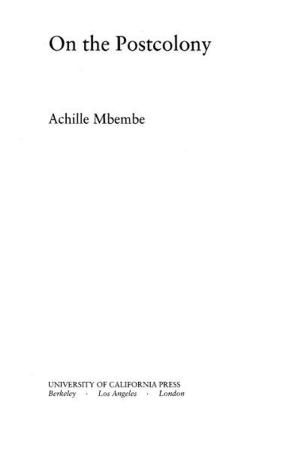| Author: | Dennis Mensah | ISBN: | 9781301247028 |
| Publisher: | Dennis Mensah | Publication: | March 3, 2013 |
| Imprint: | Smashwords Edition | Language: | English |
| Author: | Dennis Mensah |
| ISBN: | 9781301247028 |
| Publisher: | Dennis Mensah |
| Publication: | March 3, 2013 |
| Imprint: | Smashwords Edition |
| Language: | English |
The author in Chapter 5 covers the reasons put forward by prominent Ghanaian Historian, Professor Albert Adu Boahen regarding the reasons that led to the decline and fall of the Ashanti Empire. In Chapter 6, the author puts forward two external political and economic factors that led to the fall of the Ashanti Empire. The author also puts forward two internal factors that led to the fall of the Ashanti Empire. These reasons put forward by the author have not been covered by Professor Albert Adu Boahen or other prominent historians on the Ashanti Empire. Chapter 7 examines the true events and not the myths of the ‘Yaa Asantewaa War’ (the ‘War of the Golden Stool’). This chapter reveals how a provocative public speech by the British Governor of the Gold Coast demanding that he should be handed the sacred ‘Golden Stool’ led to Nana Yaa Asantewaa (‘’Queen Mother’’ of Ejisu), declaring war against the British colonialists and leading an Ashanti Army into war. The author examines the covert action taken by the British Colonial Administration to search and find the sacred ‘Golden Stool’. The actual role that Nana Yaa Asantewaa played in leading the Resistance Movement against colonial rule is examined, the eventual defeat of the Ashanti National Army, the key events leading up to the capture of Nana Yaa Asantewaa and her exile (with other Resistance Movement Leaders and Chiefs) to the Seychelles Islands as a political prisoner. The author in Chapter 8 covers the exile years of King Agyeman Prempeh (1) from the period of 1896 to 1900 in the Gold Coast Colony and Sierra Leone. Chapter 8 also covers the exile years of 1900 to 1924, that King Prempeh (1) spent living on the Seychelles Islands as a political prisoner. The author also highlights the fact that the British Government had previously exiled two other African Monarchs to the Seychelles Islands prior to the arrival of King Agyeman Prempeh in 1900. Chapter 8 covers all of the key events that occurred on the Seychelles Islands during the exile years of the Ashanti King.
The author in Chapter 5 covers the reasons put forward by prominent Ghanaian Historian, Professor Albert Adu Boahen regarding the reasons that led to the decline and fall of the Ashanti Empire. In Chapter 6, the author puts forward two external political and economic factors that led to the fall of the Ashanti Empire. The author also puts forward two internal factors that led to the fall of the Ashanti Empire. These reasons put forward by the author have not been covered by Professor Albert Adu Boahen or other prominent historians on the Ashanti Empire. Chapter 7 examines the true events and not the myths of the ‘Yaa Asantewaa War’ (the ‘War of the Golden Stool’). This chapter reveals how a provocative public speech by the British Governor of the Gold Coast demanding that he should be handed the sacred ‘Golden Stool’ led to Nana Yaa Asantewaa (‘’Queen Mother’’ of Ejisu), declaring war against the British colonialists and leading an Ashanti Army into war. The author examines the covert action taken by the British Colonial Administration to search and find the sacred ‘Golden Stool’. The actual role that Nana Yaa Asantewaa played in leading the Resistance Movement against colonial rule is examined, the eventual defeat of the Ashanti National Army, the key events leading up to the capture of Nana Yaa Asantewaa and her exile (with other Resistance Movement Leaders and Chiefs) to the Seychelles Islands as a political prisoner. The author in Chapter 8 covers the exile years of King Agyeman Prempeh (1) from the period of 1896 to 1900 in the Gold Coast Colony and Sierra Leone. Chapter 8 also covers the exile years of 1900 to 1924, that King Prempeh (1) spent living on the Seychelles Islands as a political prisoner. The author also highlights the fact that the British Government had previously exiled two other African Monarchs to the Seychelles Islands prior to the arrival of King Agyeman Prempeh in 1900. Chapter 8 covers all of the key events that occurred on the Seychelles Islands during the exile years of the Ashanti King.















